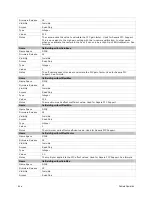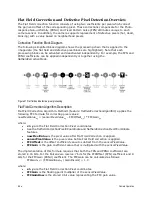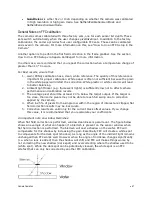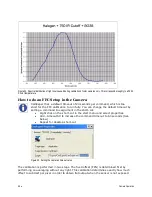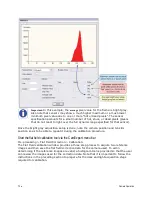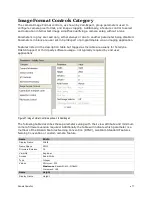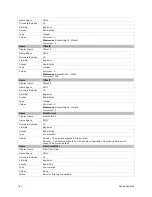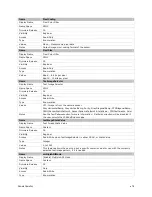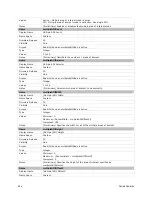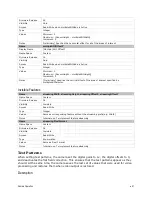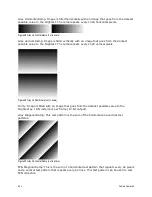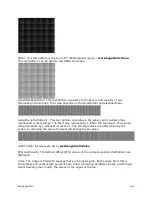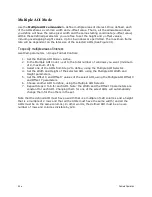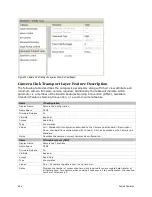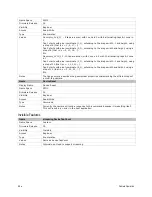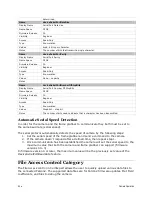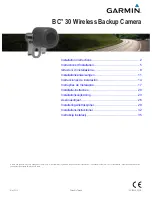
76
•
Camera Operation
The pixel replacement calibration algorithm adds the new found hot pixels to the pixel
defect map and must be run after an offset calibration. If the difference between the
average pixel value and the stored offset value (FPN coefficient) is greater than the
calibration threshold (i.e.
flatfieldCalibrationPixelReplacementOffsetThreshold
) then the
pixel is marked for replacement. Typically, the pixel replacement calibration should be run
at the highest exposure time used in the target system. See Appendix D: Internal Flat Field
Calibration Algorithms for more information on the algorithm.
Dynamic Pixel Replacement
Dynamic pixel replacement does not require calibration. It compares a given pixel with its
horizontally adjacent neighbors. If the difference between the pixel and each neighbor is
greater than the defined threshold (
defectivePixelDetectionMinBrightThreshold
), then the
pixel is replaced by the median of the three pixels.
Figure 25 Monochrome Median Filter
Figure 26 Color Median Filter
90
90 130 120 200 140 130 150 90 160 220 225
220
215
Pix1 Pix2 Pix3 Pix4 Pix6 Pix7 Pix8 Pix9 Pix10 Pix11 Pix12 Pix13 Pix14
90
90 140 120 200 140 130 150 90 160 220 225
220
215
90
90 140 120 140 140 130 150 150 160 220 225
220
215
120
200
140
150
90
160
Abs(120-200) > threshold &&
Abs(200-140) > threshold
Abs(150-90) > threshold &&
Abs(90-160) > threshold
Raw Line
Data
Data after
Median filter
Leave Edge
alone
90
90 130 120 200 140 130 150 90 160 220 225
220
215
Pix1 Pix2 Pix3 Pix4 Pix6 Pix7 Pix8 Pix9 Pix10 Pix11 Pix12 Pix13 Pix14
90
90 140 120 200 140 150 150 90 160 220 225
220
215
90
90 140 120 150 140 150 150 150 160 220 225
220
215
140
200
150
150
90
220
Abs(140-200) > threshold &&
Abs(200-150) > threshold
Abs(150-90) > threshold &&
Abs(90-220) > threshold
Raw Line
Data
Data after
Median filter
Leave Edge
alone



